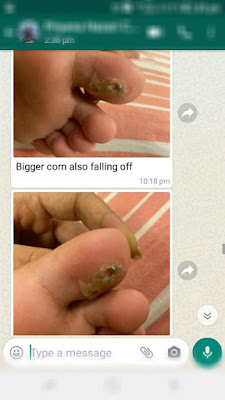Plantar
fasciitis (Heel Pain)
Is the inflammation of the plantar fascia
caused due to repetitive stress applied to it.
It is usually common in active individual,
obese, runners or athletes, people who spend most of their day on foot.
The pain is usually characterized by
piercing or searing type of heel pain that appears in the first few steps in
the morning or after a period of inactivity.
Patient may present with tenderness around
the medial calcaneal tuberosity at the plantar aponeurosis.
Pain increases when walking barefoot on
toes or while climbing stairs.
Patho-physiology
As the term implies plantar fasciitis is
the inflammation of the plantar fascia however in all the samples reviewed
there is no evidence of inflammation histologically.
However research shows that plantar fascia
is a degenerative condition, hence it is better to be called “fasciosis” than fasciitis.1
Biomechanics
of the foot during gait
There are 6 phases of gait cycle : heel
contact, weight acceptance, mid stance, push off , propulsion and toe off phase.
Foot goes for supination during heel contact phase followed by pronation in
weight acceptance phase, in order to maintain contact with the surface. From
the mid stance to the toe off phase the foot goes for supination thus making the
foot as a rigid lever which is necessary for the propulsion of the foot.
Plantar fascia plays a very important role
in maintaining this arch during the gait cycle of the foot. Because if plantar
fascia fails to work effectively the medial arch arch would disrupt and the
force required to control supination and pronation would be altered. Hence
plantar fascia plays a very important role in control of supination and
pronation of the foot during gait cycle.
Evidence
based therapy for plantar fasciitis
- Cryotherapy or NSAIDS – Not
much effective in the treatment of plantar fascia, however it provides only
temporary pain relief.
- Taping – No studies have proved
the effectiveness of taping.
- Shoe inserts- a study was done to compare the effectiveness
of the custom made orthotics and prefabricated shoe inserts with stretching. It
was found that prefabricated shoe inserts with stretching showed more effect
than custom made orthotics.
- Stretching – A study shows
plantar fascia stretch alone more effective than combined stretch of calf muscle
and Achilles tendon.
- Night splints – limited
evidence suggesting the effectiveness of night splints.
- Extra-corporeal shock-wave
therapy – No evidence supporting the effectiveness of Extra-corporeal shock wave
therapy for reducing night pain and resting pain in short term.
- Corticosteroid injection –
According to Cochraine review Steroid iontophersis injecton improved only short
term outcomes.2
As mentioned
earlier the arch of the foot is very important to maintain stability on the
surface when walking or standing. Overpronation or underpronation can have
direct influence on the effective working of plantar fascia.
Overpronated foot
Overpronation of
the foot is caused due to muscle weakness, tightness in the heel cord and
abnormal structure of the foot. Proximal muscles such as gluteus medius,
gluteus minimus, tensor fascia latae or quadriceps can contribute to the
pronation of the foot. These proximal muscles help in assisting lower extremity
response during gait, hence weakness of these muscles will transmit greater
shock to the supporting foot structures and decreased pronation control.
Heel cord assist
in dorsiflexion of the foot during gait, hence tightness in the heel cord
limits the ability to dorsiflex the ankle at heel strike phase of the gait thus
making the foot to over pronate more at the midtarsal joints in order to make
contact with the surface of the ground.
Structural
deformities include excessive sub-talar or forefoot varus.
Treatments for
overpronated foot include strengthening of the weak muscles, stretching of the
calf muscles, and using appropriate shoes with sufficient toe box and firm
ankle grip to control the movement of the ankle within the shoes. Insoles made
of polyurethane and ethyl vinyl acetate also enhances shoe support.3
Underpronated foot (Supination)
Supinated foot
which is caused due to factors such as increased muscle tightness, decreased
mobility within the joints and decreased plantar fascia extensibility.
Highy arched or
cavus foot will have limited joint mobility to distribute the force during weight
acceptance phase. Hence when foot does not pronate during weight acceptance
phase, it indirectly applies a lot of tension force to the insertion of plantar fascia at the medial
tubercle of calcaneum.
Treatment for supinated
foot include Stretching of calf muscles, mobilization of joints and increase
plantar fascia extensibility. Appropriate shoe wear with ethyl vinyl acetate
midsole provides appropriate space for the rearfoot and forefoot to move ,
offers much shock absorption.
Silicone heel
pad can further enhance shock absorption.3
Reference –
- Plantar fasciitis A degenerative process without Inflammation
(Harvey Lemont et al.)
- Plantar fasciitis (Charles
Cole, Craig Seto et al.)
- Plantar faciitis and the Windlass mechanism :
A Biomechanical Link to clinical practice (Lori A. Bolgia et al. )
 mostly at the right foot.
mostly at the right foot.








